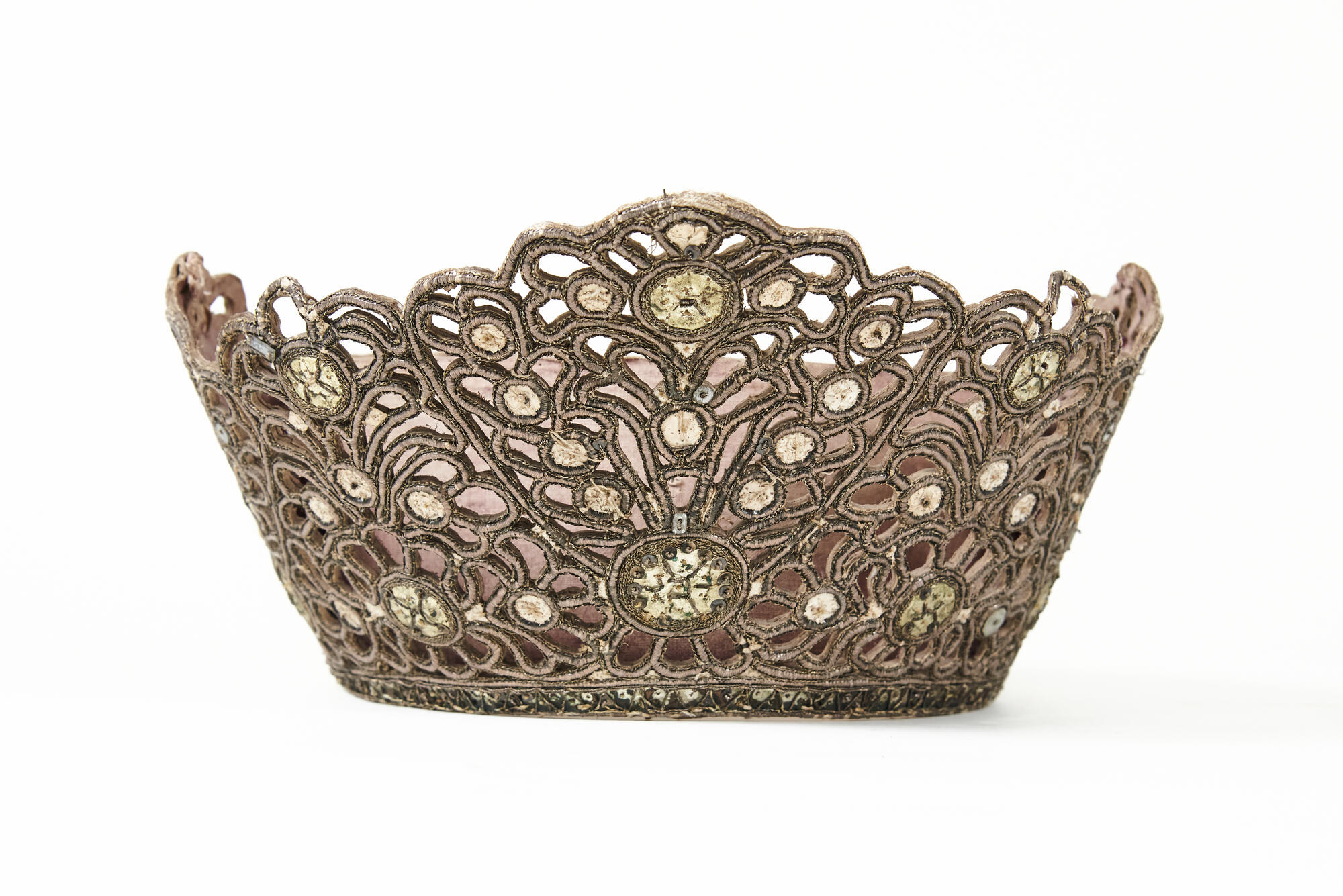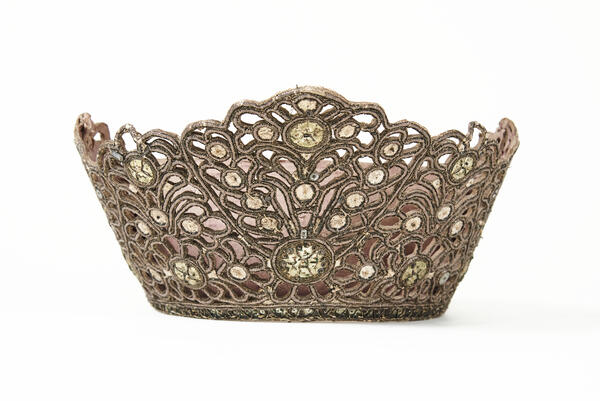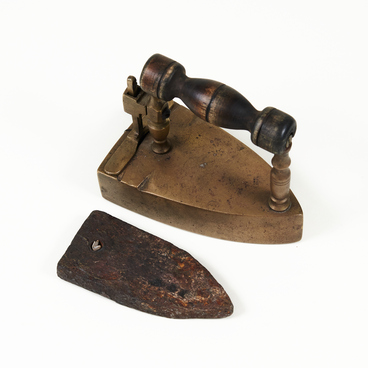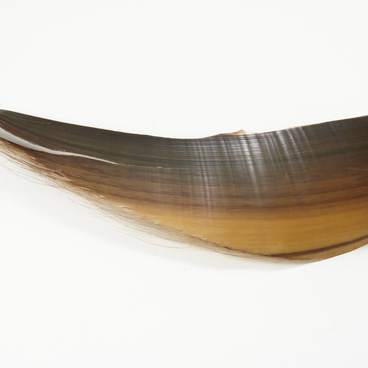A koruna and a coronet are festive headdresses worn by women. Traditionally, they consisted of a ribbon woven from gold threads, that was attached to a birch bark frame and decorated with embroidery, pearls, and precious stones (or cheaper bugles). Later, the shape became more complicated: some coronets became solid, others — open and flexible. People believed that solid headdresses in the form of a horseshoe should frame a maiden’s face like a halo.
The koruna was the most festive of all the maidens’ headdresses. It is a solid coronet in the form of an arched hoop with an openwork pattern — exactly this type of headdress is displayed in the museum collection. The koruna was made of birch bark and glued with canvas. The surface had to have a pattern, and the upper edge always had to have notched elements called ‘gorodki’.
The name of the headdress comes from the word ‘crown’. Researchers believe that the korunas and coronets of the late 17th — early 19th century appeared as a result of the combination of folk and grand-ducal headdresses in the pre-Mongol time.
The front of a coronet was decorated with pearls, beads, precious or semi-precious stones, colored glass in a metal frame, mother of pearl, colored foil, a pattern embroidered with gold thread, copper or brass leaves on a stem. The inner side was covered with calico or printed cloth. The koruna was usually fixed on a small brocade band ending in long tie-strings. A beaded or pearl thread — a string that descended to the forehead — served as an additional decoration. In addition, a wide strip of brocade adorned with ribbons and lace was used as a decorative element. It was attached to the coronet from behind and went down the maiden’s back to the shoulder blades.
A common feature of korunas and coronets was that they left the top of a maiden’s head open. Voluminous hair and a long braid were considered a sign of beauty among peasants, so maidens used every opportunity to display them. There was a belief that a beautiful woman with a good braid would be happy and rich in marriage. Therefore, the heroines of Russian fairy tales always had a long braid.
By the mid-19th century, coronets were primarily worn at weddings. Often, such headdress could be the only one in the whole neighborhood and was rented for the time of the wedding. The bride wore this headdress on her way from her parents’ home to the church. She would also wear it when she came to the house of her newlywed husband for a banquet. The bride took the koruna off only when she changed her hairstyle and headdress — from a maiden’s one to that of a married woman — during the special ceremony.
The koruna was the most festive of all the maidens’ headdresses. It is a solid coronet in the form of an arched hoop with an openwork pattern — exactly this type of headdress is displayed in the museum collection. The koruna was made of birch bark and glued with canvas. The surface had to have a pattern, and the upper edge always had to have notched elements called ‘gorodki’.
The name of the headdress comes from the word ‘crown’. Researchers believe that the korunas and coronets of the late 17th — early 19th century appeared as a result of the combination of folk and grand-ducal headdresses in the pre-Mongol time.
The front of a coronet was decorated with pearls, beads, precious or semi-precious stones, colored glass in a metal frame, mother of pearl, colored foil, a pattern embroidered with gold thread, copper or brass leaves on a stem. The inner side was covered with calico or printed cloth. The koruna was usually fixed on a small brocade band ending in long tie-strings. A beaded or pearl thread — a string that descended to the forehead — served as an additional decoration. In addition, a wide strip of brocade adorned with ribbons and lace was used as a decorative element. It was attached to the coronet from behind and went down the maiden’s back to the shoulder blades.
A common feature of korunas and coronets was that they left the top of a maiden’s head open. Voluminous hair and a long braid were considered a sign of beauty among peasants, so maidens used every opportunity to display them. There was a belief that a beautiful woman with a good braid would be happy and rich in marriage. Therefore, the heroines of Russian fairy tales always had a long braid.
By the mid-19th century, coronets were primarily worn at weddings. Often, such headdress could be the only one in the whole neighborhood and was rented for the time of the wedding. The bride wore this headdress on her way from her parents’ home to the church. She would also wear it when she came to the house of her newlywed husband for a banquet. The bride took the koruna off only when she changed her hairstyle and headdress — from a maiden’s one to that of a married woman — during the special ceremony.



